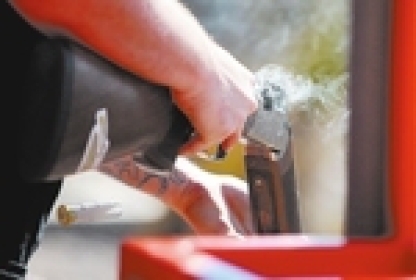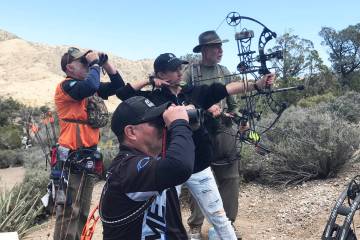Using shotgun betters dove hunter’s chances
With opening day of dove season behind us, it is probably safe to assume that the quick-flying birds humbled more than a few hunters. Some may even be counting the number of shots they took and asking how they can improve their bird-per-shot ratio.
Such is the nature of hunting mourning doves, I suppose, but they aren't the only bird species that will challenge a wing shooter's skill. Obviously, more time on the range will help any hunters improve their performance, but perhaps more understanding of how a shotgun works will help them do even better.
Contrary to a rifle, which shoots a single projectile and requires precise aiming for that projectile to impact the target where intended, a shotgun generally shoots multiple BB-like projectiles called "shot." When fired, the shotgun throws a group or pattern of shot toward the intended target. This pattern of shot makes it more likely that the shooter will hit a high-flying or moving target than he would if using a firearm that shoots a single projectile.
Though some shotguns will shoot a single projectile called a "slug," you won't use that load for birds or rabbits. Therefore, I won't address slugs in this column.
The benefit of shot over a single projectile in some hunting situations was made clear when my friends and I hunted rabbits in our youth. It didn't take long to realize that we brought home more rabbits when hunting with a shotgun than we did with our rifles. The difference was tied directly to the number of projectiles a shotgun put in the air at one time versus the rifle's single bullet. Even a semi-automatic rifle can't make up the difference, not accurately.
Another upside to shotguns is the manner in which a shooter acquires his target. Where a rifle is designed for precise aiming, a shotgun is designed to be pointed at the intended target. This makes acquisition much quicker and even a little forgiving.
Pointing a shotgun is a lot like putting a key in the lock on your front door. You don't have to get down and aim your key into the lock, you simply focus on the keyhole and your brain and hand do the rest. After doing it enough times, your brain knows exactly where your hand and the key need to go to open the front door. You can even do it successfully when the porch light is out.
Part of pointing your shotgun is understanding the pattern it produces when shooting a certain load. Each gun is an individual, and the shot from a particular load will create a unique pattern as it flies toward the target.
Spend some time on the range patterning your shotgun and the loads you intend to use while hunting different species. Keep in mind that how the gun is choked will affect the pattern and its size at a particular distance.
Basically, a choke is a narrowing in the shotgun barrel just before the muzzle that controls how fast the shot pattern spreads after leaving the barrel. Some shotguns come with a fixed choke, while others can be changed out to accommodate the shooter's needs. I tend to use a modified choke for just about everything I do. More so because I am a creature of habit rather than any other reason.
Patterning a shotgun is a fairly simple process. Tack up large pieces of cardboard or news print at the distances you intend to shoot your quarry. Thirty yards is probably a good starting point. Point your shotgun at a center mark on the target and squeeze the trigger. Note where the bulk of your shot hits the target. This will let you know where you have to point the shotgun in relation to your target so the dove, duck or chukar will be hit by the most shot pellets and thus insure a clean, quick and humane kill.
The more you practice pointing your shotgun while getting in some range time, the better you will perform in the field. You also might consider some professional coaching to help you iron out the wrinkles in your technique.
Either way, work toward trusting your brain and hands to put the shotgun where it needs to be when the time comes.
Freelance writer Doug Nielsen is a conservation educator for the Nevada Department of Wildlife. His "In the Outdoors" column, published Thursday in the Las Vegas Review-Journal, is not affiliated with or endorsed by the NDOW. Any opinions he states in his column are his own. He can be reached at intheoutdoorslv@gmail.com.






















